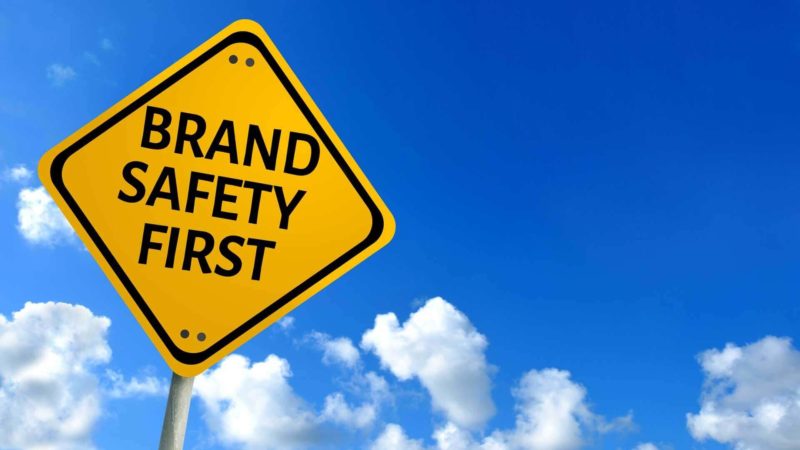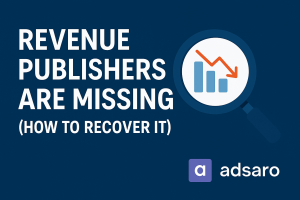In today’s digital landscape, Brand Safety in Advertising is more crucial than ever. With the rise of automated ad placements and programmatic advertising, brands are increasingly at risk of being associated with harmful, misleading, or inappropriate content. From fake news and hate speech to ad fraud and extremist content, the consequences of unsafe ad placements can be severe—leading to reputational damage and financial loss. This blog explores the key risks of unsafe ad placements, strategies for ensuring brand safety, and the essential tools advertisers can use to protect their brand reputation.
Understanding Brand Safety in Advertising
Brand safety refers to the strategies and measures taken to prevent ads from appearing alongside harmful or inappropriate content. This includes content related to hate speech, violence, adult material, fake news, and extremist views. Brand suitability, a related concept, ensures ads are aligned with a brand’s values and target audience.
Why Brand Safety Matters
- Protects Reputation: Brands associated with inappropriate content may lose consumer trust and face public backlash.
- Enhances Consumer Trust: Ads placed in safe environments increase user engagement and brand credibility.
- Avoids Financial Losses: Poor ad placements can lead to wasted ad spend and decreased ROI.
- Ensures Compliance: Many advertising regulations require brands to maintain safe ad placements.
Key Risks to Brand Safety
1. Fake News & Misinformation
Fake news refers to misleading or false information spread through digital platforms. If a brand’s ads appear on fake news websites, it can harm credibility and make consumers question the authenticity of the brand. Brands must ensure their ads do not support or finance misinformation by using fact-checking tools and monitoring placements.
2. Hate Speech & Extremism
Hate speech includes content that promotes discrimination, violence, or hostility against specific groups. Extremist content is related to radical ideologies that may incite harm. Advertisers must prevent their ads from appearing on such platforms to avoid PR crises. Advertisers can integrate AI-driven brand safety tools to detect and block harmful content.
3. Inappropriate Content
This includes explicit material, graphic violence, illegal activities, or highly controversial topics. If ads are placed alongside such content, consumers may associate the brand with negative themes. Ensuring contextual targeting and content moderation can help avoid such issues.
4. Ad Fraud & Malicious Websites
Ad fraud occurs when fake or bot-driven traffic is used to inflate ad impressions or clicks, leading to wasted marketing budgets. Malicious websites may also contain viruses, malware, or phishing scams, putting users at risk. Advertisers should use fraud detection tools, real-time monitoring, and verified ad networks to prevent ad fraud.
Strategies to Ensure Brand Safety
1. Use Whitelists & Blacklists
- Whitelists: A list of pre-approved websites where a brand’s ads can appear, ensuring a safe ad environment.
- Blacklists: A list of websites that are banned from displaying a brand’s ads due to their association with unsafe or inappropriate content. Regularly updating blacklists helps minimize brand safety risks.
2. Leverage Contextual Targeting
Contextual targeting involves placing ads in relevant content categories. Instead of focusing solely on user behavior, this strategy ensures that ads appear in appropriate environments related to the brand’s niche. Advanced AI tools analyze page content in real time to ensure relevance and safety.
3. Work with Trusted Ad Networks
A trusted ad network refers to a platform that connects advertisers with publishers while ensuring compliance with brand safety measures. Partnering with reputable networks minimizes exposure to harmful content. Advertisers should vet ad partners and ensure they adhere to industry standards.
4. Implement AI & Brand Safety Tools
- Integral Ad Science (IAS), DoubleVerify, and MOAT are AI-driven brand safety tools that analyze web content and prevent unsafe ad placements.
- These tools scan websites for harmful content, ensuring brands avoid appearing next to inappropriate material. AI-driven solutions use machine learning to detect risky environments in real time.
5. Regularly Monitor & Audit Campaigns
A brand safety audit involves checking where ads are being placed and taking corrective measures if necessary. Regular monitoring ensures long-term protection against unsafe placements. Advertisers should establish automated reporting systems to detect and mitigate risks proactively.
6. Adopt Pre-Bid & Post-Bid Brand Safety Measures
- Pre-bid filtering: Prevents ads from being served on unsafe sites by applying brand safety rules before an ad is placed. This helps advertisers avoid risky placements from the start.
- Post-bid analysis: Analyzes ad placements after they have been displayed to detect any unsafe occurrences. This enables brands to take corrective action if needed.
The Role of Programmatic Advertising in Brand Safety
Programmatic advertising is an automated method of buying and placing ads in real-time. While it increases efficiency, it also poses brand safety risks due to the lack of direct human oversight. Automated bidding systems may place ads on inappropriate websites, making brand safety tools essential.
Best Practices for Programmatic Ad Safety
- Setting up brand safety filters within Demand-Side Platforms (DSPs) to prevent ad placements on unsafe content.
- Using pre-bid targeting solutions, which block entire content categories that may pose risks.
- Partnering with brand safety verification vendors to ensure real-time monitoring and protection. Advertisers should prioritize transparent programmatic partners who commit to brand safety compliance.
Conclusion
As the digital advertising ecosystem continues to expand, ensuring brand safety has become more complex but also more essential. A single inappropriate ad placement can harm a brand’s credibility and consumer trust. However, by leveraging whitelists, blacklists, AI-driven monitoring tools, contextual targeting, and proactive auditing, advertisers can safeguard their brand reputation. Staying ahead of emerging threats and continuously refining brand safety strategies will help businesses maintain a strong, trustworthy brand presence in the ever-evolving digital space. In the end, a well-protected brand not only ensures financial security but also strengthens its long-term relationship with its audience.








Leave a Reply